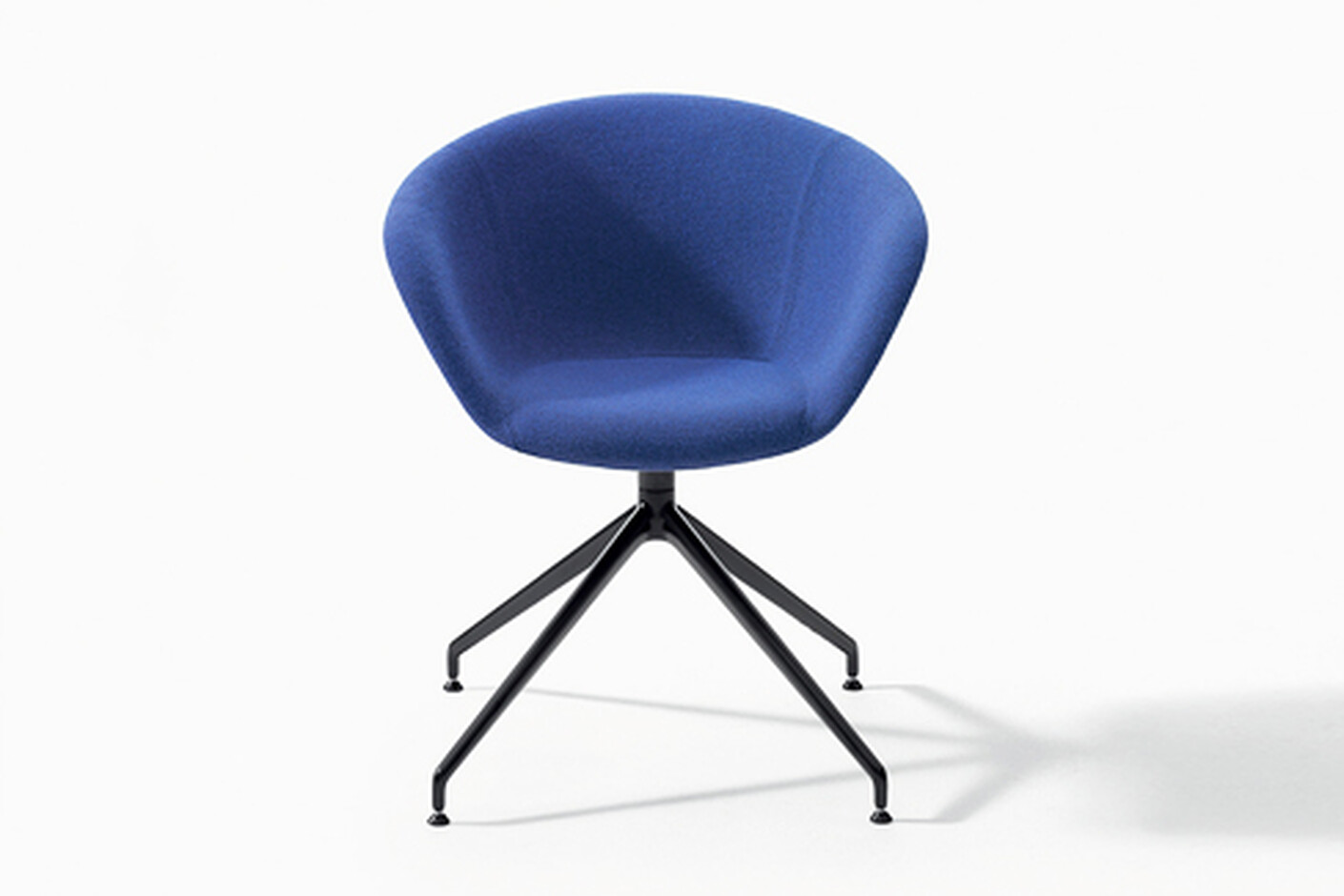Always on duty
The Royal College of Surgeons in the heart of Dublin has been training surgeons for decades. The renowned university has been housed in a magnificent classical building ever since 1810. In 2017, meanwhile, the architectural practice of Henry Lyons expanded the premises with a new building comprising a good 11,000 square meters of space spread across ten stories above the ground and four below. While the façade offers dramatic contrasts in its interplay of bricks and glass, for the interior the architects found themselves facing the task of incorporating various different uses within the space: from rooms for clinical and surgical training to the library and auditorium to the university’s sports facilities. In spite of the hugely diverse areas, the atmosphere within the building had to remain open and communicative in order to provide an ideal learning atmosphere for the budding medics.
This is achieved partly thanks to the comfortable yet functional seating from Arper, which is used throughout the building. Students and visitors alike can get comfy on chairs from the "Catifa 46" series, which was designed by Lievore Altherr Molina back in 2004. With a seat shell made of curved plywood, the chair boasts a gentle dynamism that can be individualized with different color tones, coverings made of leather or fabric, and a variety of different frames. By way of support for a shorter work session, each chair can also be fitted with a writing tablet. Stackable and lightweight, the seating is also very flexible. "Aava" by Antti Kotilainen represents the perfect accompaniment: Originally designed in wood, its flowing contours are now available in plastic. The seat shell can also be covered in leather, artificial leather or fabric, which offers a huge number of options for the furniture at the Royal College of Surgeons.
For areas where the students like to settle down and read, meanwhile, the seating can be a bit more generous. "Colina" designed by Lievore Altherr Molina for Arper is an inviting option with its organic forms and broad seat surface. The arms and backrest appear to be one curved piece, providing additional comfort for the sitter. When it’s time to be a bit more agile, "Duna 02" by the same designers is at hand, with a seat shell originally designed in 2014 that appears like the petals of a flower. Arper has also created an environmentally friendly version of "Duna 02"; it is made of polypropylene that consists of 80-percent recycled industrial waste. It’s rock-solid, just like the plastic "Juno" chair by James Irvine, whose lightweight, one-piece structure and linear forms ensure it fits into any area of the university. Clarity, openness and interaction – the character of the Royal College of Surgeons is perfectly reflected in the architecture by Henry Lyons and the variety of the furniture courtesy of Arper. (am)



















